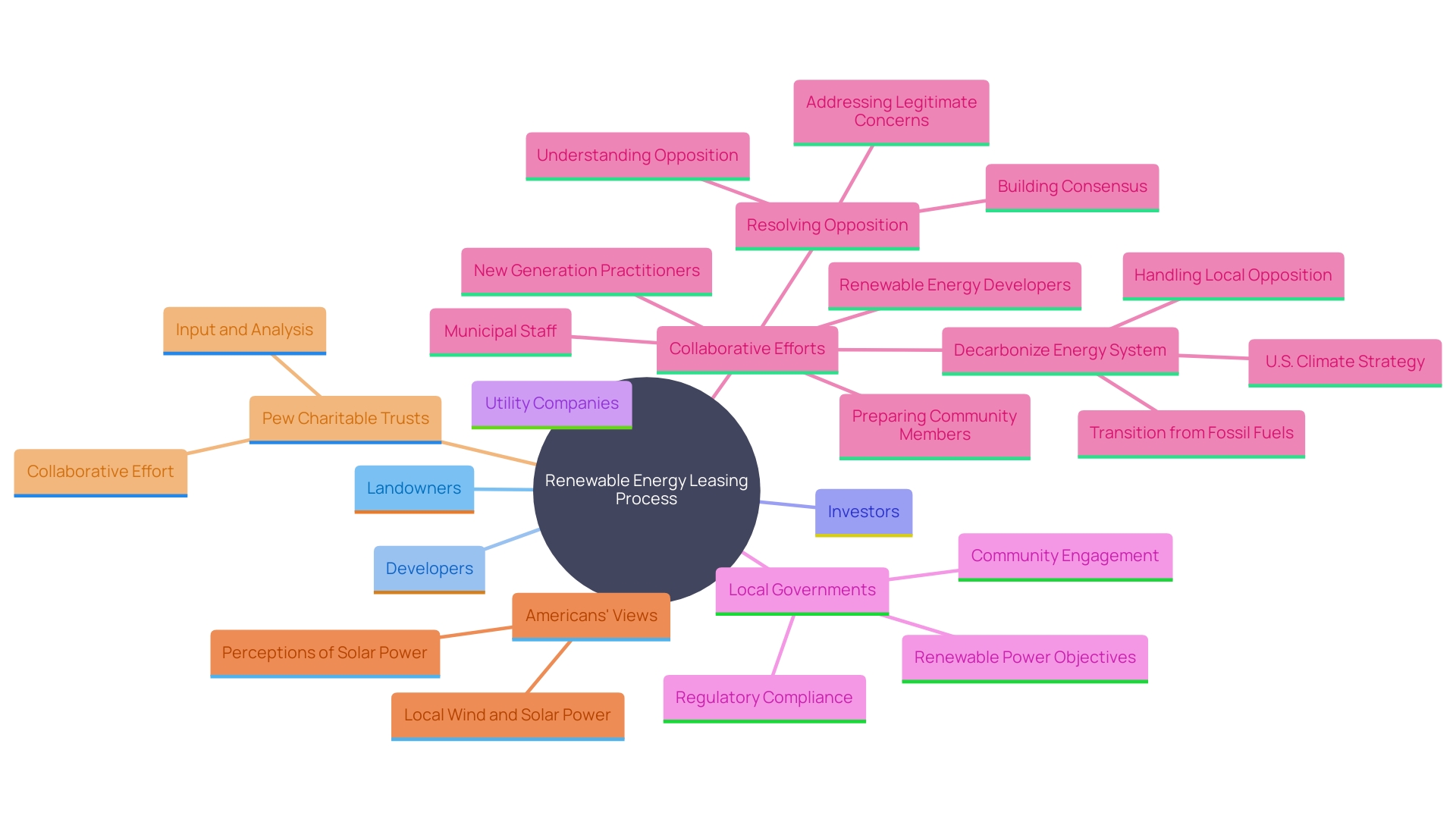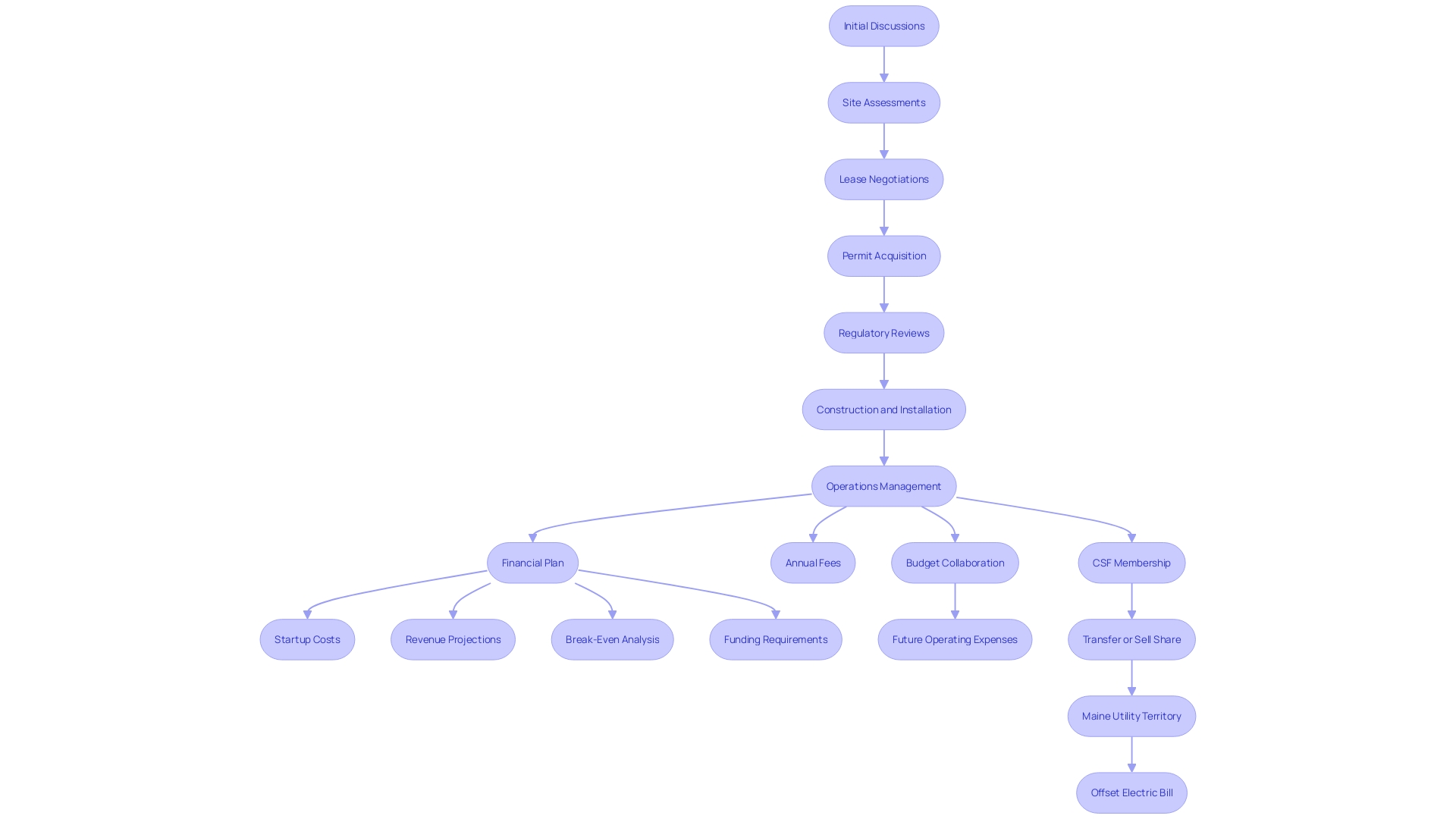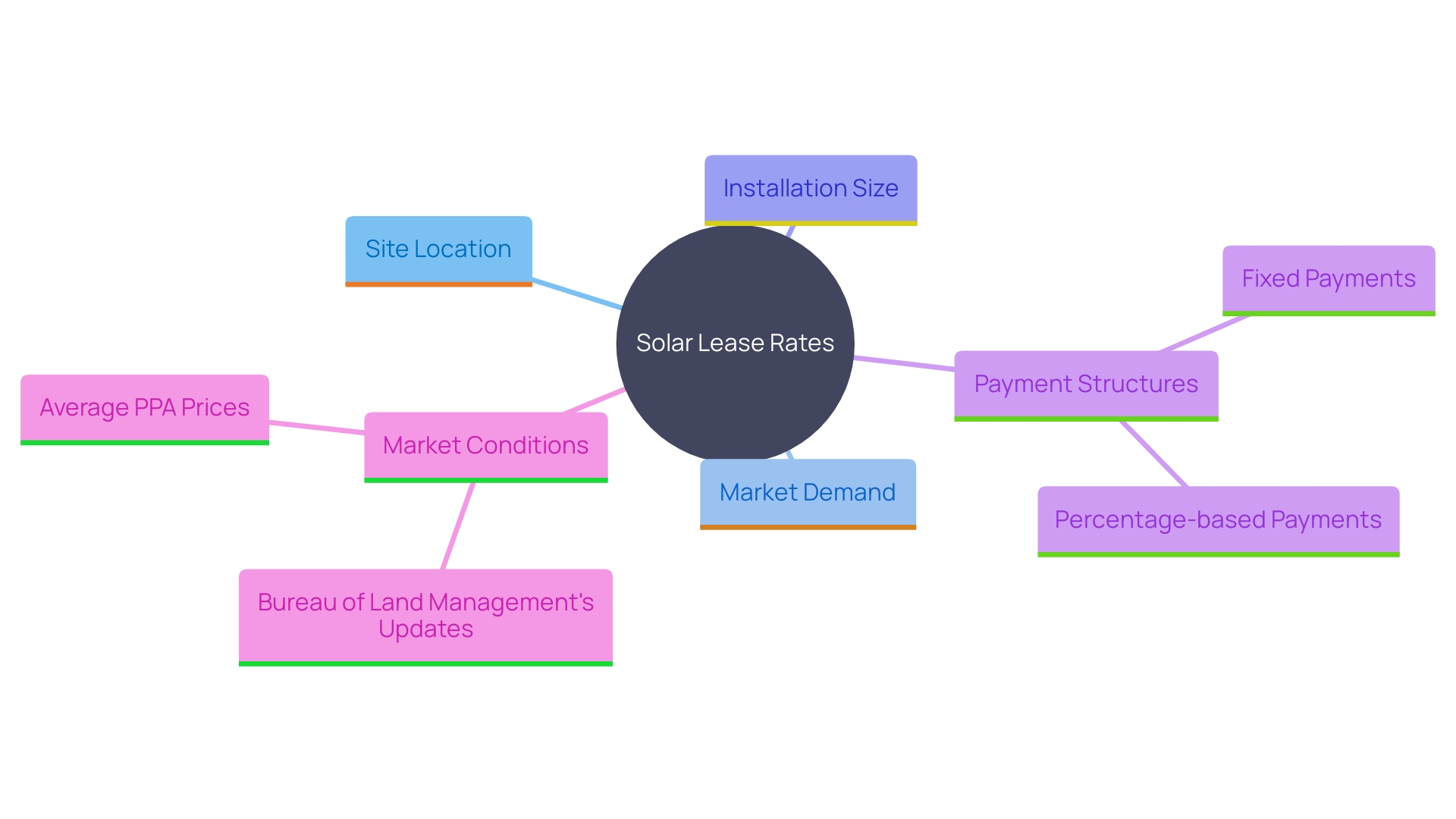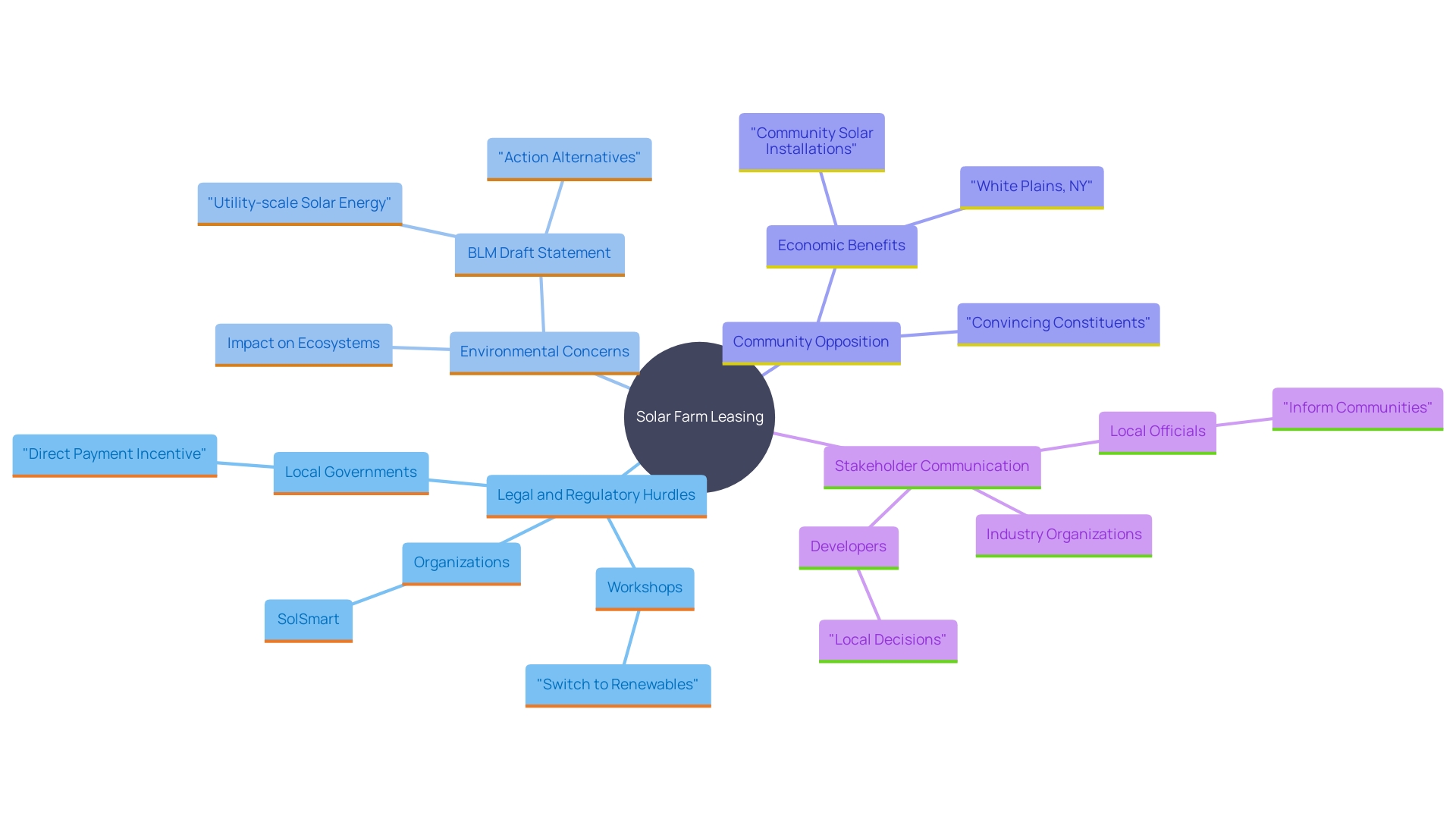Introduction
The solar farm leasing process is a multifaceted endeavor requiring the collaboration of various key stakeholders, including landowners, solar developers, investors, utility companies, and local governments. Each party plays a crucial role in ensuring the successful establishment and operation of solar energy projects. This article delves into the complexities and considerations involved in solar farm leasing, from the roles of different stakeholders to the regulatory landscape and community involvement.
It also explores the financial implications for landowners, the detailed leasing process, and the common challenges faced, providing a comprehensive guide for anyone interested in the burgeoning field of solar energy development.
Key Stakeholders in Solar Farm Leasing
The renewable energy farm leasing process involves several key stakeholders, each playing a crucial role in ensuring the successful establishment and operation of energy projects. The main stakeholders consist of landowners, renewable energy developers, investors, utility companies, and local governments. Property owners are usually private persons or organizations that possess appropriate terrain for energy production. Solar developers are firms or entities that create, construct, and manage renewable energy farms, often seeking land to rent for their initiatives. Investors supply the required funding for renewable energy initiatives, while utility firms may acquire the produced electricity. Local authorities may participate in permitting and regulatory processes, ensuring that renewable energy projects comply with local zoning laws and environmental regulations.
To facilitate understanding among stakeholders, it is crucial to address the complexities involved. For instance, energy developers must maneuver through various local, state, and federal regulations, including zoning laws, property use permits, and environmental evaluations. A well-documented case is the BLM’s Draft Utility-scale Energy Development Programmatic Environmental Impact Statement, which examines different land use allocations for energy applications across an 11-state planning area. This example emphasizes the significance of thorough planning and regulatory compliance in solar development.
Moreover, community involvement is vital. The host community expects to have a voice in project design and operations, aiming to secure well-paying jobs and share in the project returns. Equity plans submitted to the DOE, though confidential, illustrate the significance of negotiations and agreements between companies and stakeholders in host communities. These plans often include workforce training agreements with local universities and community colleges, ensuring long-term benefits for the community.
In recent developments, local governments are increasingly setting renewable power objectives. For example, a study conducted by the University of Michigan’s Center for Local, State, and Urban Policy revealed that the proportion of Michigan local governments with sustainable power objectives has doubled since 2019. This increasing trend highlights the positive policy conversations and community backing for renewable initiatives.
Overall, effective communication and collaboration among all stakeholders, supported by thorough planning and regulatory compliance, are essential for the successful establishment and operation of renewable energy projects.

Landowner Considerations for Leasing Land
Property owners contemplating renting their territory for energy farms should assess several important elements prior to concluding contracts. These encompass comprehending the ecological effect of photovoltaic setups and predicting possible alterations in property usage. The usual duration for a renewable energy lease varies from twenty to thirty years, although it can be modified based on discussions. During this period, landowners might be able to engage in other activities, such as livestock grazing or agriculture, depending on the terms agreed upon.
Evaluating the appropriateness of the ground is essential, encompassing elements such as sunlight exposure, topography, and closeness to electrical infrastructure. Considering that flat, well-draining areas suitable for farming are also excellent for photovoltaic installations, property owners should explore dual-use or co-location strategies to maximize usage and create various income sources.
Financial implications are another vital consideration. This encompasses lease rates, payment structures, and potential tax benefits. Some states offer policies that allow lands with dual-use systems to maintain eligibility for tax benefits, which can be advantageous for landowners.
Navigating the regulatory landscape is essential, as renewable energy projects are subject to various local, state, and federal regulations, including zoning laws and environmental assessments. Partnering with experienced solar companies can help landowners comply with these requirements and secure necessary permits.
The lease contract should clearly specify terms such as duration, rental payments, allowed uses of the property, and restrictions. Key components like site access, maintenance responsibilities, and decommissioning procedures must be addressed. Legal counsel is recommended to ensure landowner interests are protected and favorable terms are negotiated. Provisions for maintaining and restoring the area to its original condition upon lease termination are crucial, along with adequate liability coverage and insurance to safeguard against potential damages.
Grasping long-term commitments and exit strategies is crucial, as property owners must consider the advantages against possible future usage conflicts or alterations in personal situations. With the appropriate considerations and protections in place, renting property for renewable energy development can be a feasible and lucrative endeavor for property owners.
The Leasing Process for Solar Farms
The leasing process for energy farms begins with initial discussions between landowners and developers. Following preliminary agreements, developers conduct site assessments and feasibility studies to evaluate the land's suitability for solar energy production. Once the site is deemed viable, lease negotiations commence, covering terms such as lease duration, payment rates, and maintenance responsibilities. The finalized lease agreement often requires developers to secure permits and undergo regulatory reviews, which can extend the process from several months to years, depending on local regulations and the complexity of the undertaking.
The Bureau of Land Management (BLM) has recently revised its Western Solar Plan, potentially opening 22 million acres for applications across 11 states, including Arizona, California, Colorado, Nevada, New Mexico, Utah, Idaho, Montana, Oregon, Washington, and Wyoming. This plan aims to streamline the permitting process for renewable energy projects in designated priority areas, enhancing the feasibility of large-scale energy development. These priority areas, situated within 10 miles of current or proposed transmission lines, provide significant renewable energy potential with minimal environmental conflicts.
The revised plan projects that renewable energy development could take place on around 700,000 acres of BLM land in the next 20 years, producing up to 100,000 megawatts of electricity, enough to supply tens of millions of homes. However, projects proposed within these areas are not guaranteed approval, as they must still undergo a thorough review process to ensure compliance with environmental and regulatory standards.
'The incorporation of photovoltaic power planning and zoning best practices can promote the expansion of renewable sources while balancing other development priorities.'. Communities can gain advantages from approaches that include renewable sources into plans, ordinances, and development regulations, aiding in the management of fire hazards linked to photovoltaic installations and power storage systems. Federal and state policies also play a significant role, with initiatives like the Solar Massachusetts Renewable Target (SMART) program offering financial incentives for dual-use photovoltaic projects, which combine light capture production with agricultural activities.
The comprehensive approach to photovoltaic farm leasing, from initial discussions to regulatory approvals, underscores the importance of strategic planning and collaboration between stakeholders. As sunlight-based energy continues to expand, these practices and policies will be crucial in ensuring sustainable and efficient development.

Understanding Solar Lease Rates and Payments
Solar lease rates and payment structures can differ significantly due to various factors such as site location, market demand, and the size of the solar installation. For instance, the Bureau of Land Management's plans to update the Solar Programmatic Environmental Impact Statement may ease access for developers to build utility-scale projects on public lands, influencing market dynamics. Lease agreements often include fixed annual payments, percentage-based payments on energy production, or a combination of both. In 2023, the average price of a renewable energy PPA in North America reached $52.69/MWh, reflecting the highest on record, which impacts the financial terms offered in lease agreements.
Understanding local market conditions and comparable lease rates is crucial for landowners to negotiate favorable terms. A Purdue University poll showed that over half of large U.S. farmers were offered at least $1,000 an acre in recent discussions about planting solar panels, highlighting the variability and potential profitability in lease agreements. Additionally, lease agreements may include clauses for payment escalations over time to account for inflation or increases in energy prices. Transparency in payment structures is essential to ensure that landowners fully understand their financial commitments and potential returns, making informed decisions in an evolving market.

Common Challenges and Solutions in Solar Farm Leasing
Solar farm leasing offers significant opportunities, but it also presents several challenges for both landowners and developers. Navigating the intricate legal and regulatory frameworks is one of the most notable hurdles. Experts from Stanford and other institutions emphasize the importance of refining the permitting process to balance efficiency with environmental and health safety outcomes. Additionally, addressing environmental concerns is critical, as improper management can negatively impact local ecosystems. For instance, stakeholders have raised concerns about the impact on the Mojave Desert tortoise in Nevada, highlighting the need for careful placement of initiatives.
Community opposition is another significant challenge. A recent survey revealed that community opposition to utility-scale solar initiatives has grown, with 228 local policies restricting development as of 2023. Interacting with local communities early in the process is essential to reduce resistance and ensure initiatives advance seamlessly. Experts recommend that improved community involvement results in quicker and more successful initiatives.
To tackle these challenges, clear communication and collaboration among stakeholders are essential. Involving experienced legal and consulting professionals can help navigate complex regulatory requirements, ensuring compliance with all necessary laws. Developing a robust project plan that includes risk management strategies can further enhance the project's success. For instance, a research team is exploring the potential for harmonious coexistence between renewable energy and agriculture, ensuring that land quality is maintained or improved post-lease. Such approaches are vital for sustainable and community-supported solar farm development.

Conclusion
The solar farm leasing process is a complex and collaborative endeavor that necessitates the involvement of various stakeholders, including landowners, solar developers, investors, utility companies, and local governments. Each party has distinct yet interconnected roles that contribute to the successful implementation and operation of solar energy projects. Effective communication and strategic planning among these stakeholders are crucial for navigating the regulatory landscape and addressing community concerns, ultimately fostering a conducive environment for solar development.
Landowners play a pivotal role in this process, as their considerations regarding lease agreements significantly influence the viability of solar projects. Evaluating environmental impacts, understanding financial implications, and ensuring compliance with regulatory requirements are essential steps for landowners contemplating leasing their land. With a well-structured lease agreement that outlines terms and responsibilities, landowners can secure both financial benefits and long-term land stewardship.
The leasing process itself involves meticulous planning and regulatory compliance, ranging from initial discussions to securing necessary permits. The recent updates to the Bureau of Land Management’s Western Solar Plan illustrate the ongoing efforts to streamline these processes, enhancing the feasibility for large-scale solar development. However, challenges such as community opposition and environmental concerns must be addressed to ensure the successful deployment of solar projects.
Engaging with local communities and implementing effective risk management strategies can mitigate these challenges, paving the way for sustainable solar energy solutions.
In summary, the solar farm leasing process is multifaceted and requires the active participation of all stakeholders. By prioritizing collaboration, thorough planning, and community engagement, the potential for solar energy development can be maximized, contributing to a cleaner and more sustainable energy future.




